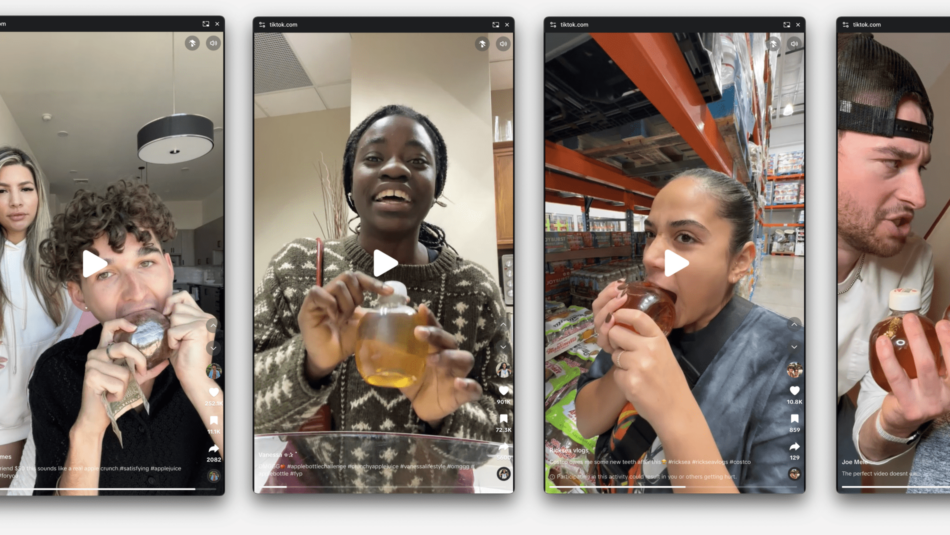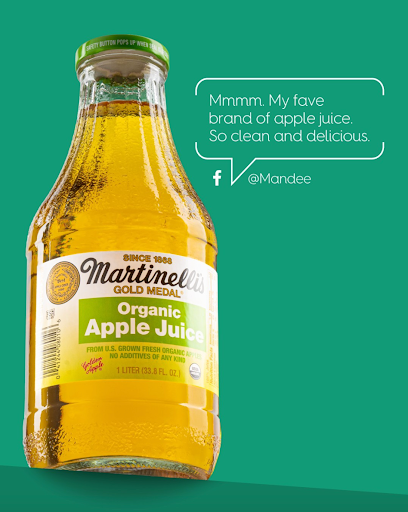
How Food Brands Can Convert User-Generated Content into Trust and Engagement
Today’s consumers are more skeptical, more discerning, and more selective about the messages they believe. While traditional advertising still commands reach and drives awareness, consumers expect brands to show up in ways that extend beyond traditional advertising and that demonstrate greater authenticity, transparency, and relevance.
User-generated content (UGC) and influencer marketing have emerged as powerful tools in this environment. They add layers of credibility, relatability, and social proof that enhance the effectiveness of advertising campaigns. When used strategically, these channels don’t replace traditional advertising — they make it work harder by surrounding consumers with trusted voices and authentic stories.
For today’s CPG food brands, success comes from blending high-impact advertising with credible, real-world endorsements.
The New Credibility Currency
In today’s marketplace, credibility is one of the most valuable brand currencies.
Consumers — especially younger ones — are no longer content to take a brand’s word for it. They seek third-party validation, whether from influencers they follow, content created by real users, and reviews and recommendations from their peers.
This shift toward social proof doesn’t replace or diminish the role of advertising. Instead, it elevates the need for brands to build ecosystems of socially driven trust around their core messaging.
Brands that combine traditional media with credible, community-driven voices create a powerful flywheel effect: Advertising drives initial awareness, while social proof builds belief and deepens loyalty.
The Value of UGC
The numbers tell a compelling story about why food brands should include user-generated content in their marketing mix.
First, the trust factor can’t be overstated. The State of Social & User-Generated Content 2023 found that consumers rank UGC as some of the most trustworthy content they encounter online. This social proof is invaluable for food brands trying to build credibility.
Second, UGC doesn’t just build trust and community — it’s a powerful driver of purchasing decisions. Just over 70% of consumers are likely to purchase an item based on social media referrals, and a study shows UCG to be 5× more likely to convert shoppers. When your customers become your advocates, their personal testimonials carry significant weight.
Leveraging Existing UGC: Beyond Passive Monitoring
Many food brands already receive a steady stream of mentions and tags across social platforms. The difference between brands that merely collect these mentions versus those that transform them into marketing assets lies in the response strategy.
Effective engagement with existing UGC starts with responding promptly to every mention — not just with generic “thanks for sharing” comments, but with personalized responses that acknowledge the specific context.
This simple practice signals to both the original poster and others in their network that your brand values customer voices. It also demonstrates that you’re listening. This creates a flywheel effect where others become more likely to share their own experiences with your brand.
Take Martinelli’s approach during the viral #applejuicechallenge, in which consumers observed that biting into a plastic, apple-shaped bottle of Martinelli’s juice produced a satisfying crunching sound much like biting into a fresh apple. Rather than letting the moment pass, the brand actively engaged with user videos, participated in comment sections, and even added select content creators to their gifting campaigns. This strategy extended the lifespan of what might have been a fleeting viral moment into sustained brand engagement.
Importantly, effective UGC management must address both positive and negative content. How brands respond to critical or negative mentions often builds more trust than their handling of praise. Fast, transparent responses to product concerns or customer service issues demonstrate integrity and a customer-first orientation that resonates with observers.
Finally, keep in mind that certain events, seasons, or holidays may drive a natural spike in user-generated content. Be sure to pay extra close attention to what users are posting during those “high activity” moments.
Read the Fine Print: Legal Considerations for UGC
When repurposing UGC for marketing use, rights management becomes crucial. Different uses require different kinds of permission. For resharing content in Stories or Reels, a simple acknowledgment often suffices. However, for in-feed posts or paid advertising, formal permission is essential.
What’s most important is developing a consistent, brand-wide approach to UGC rights and permissions with input from your legal team. For instance, you might take a tiered approach:
- Instagram Story reshares: No formal permission required
- In-feed reposts: Direct message requesting permission
- Paid advertising: Signed contract specifying usage duration and compensation (if applicable)
Developing a structured, formal rights management policy protects both your brand and content creators while maintaining the authentic relationship at the heart of effective UGC.
Cultivating Strategic UGC: Building a Content-Generating Community
For brands that receive limited organic UGC, strategic cultivation is essential. Rather than focusing solely on one-off campaigns, you should invest in community-building to create environments where sharing becomes natural.
California Walnuts faced this very challenge as a commodity board without a defined consumer product. Their solution demonstrates the creativity required when direct product interactions are limited. Because 99% of walnuts sold in the US are grown in California, they could reasonably engage with virtually any walnut-related content. That included content produced by and for health and wellness and health professionals in addition to consumers. By conducting manual searches for walnut recipes across platforms, they found ways to engage authentically with creators regardless of whether they had explicitly tagged the organization.
While giveaways and hashtag challenges can generate quick bursts of content, they often fall short in producing the authentic, high-quality UGC that drives real engagement. Giveaways that require content submissions typically yield lower participation than simple comment-to-win contests. People want the reward without the effort.
Instead, focus on:
- Building consistent community engagement through daily interactions
- Highlighting existing UGC prominently with “Tag us for a chance to be featured” messaging
- Responding quickly to organic mentions and shares to encourage continued participation
This approach generates a steady stream of authentic content rather than sporadic bursts tied to promotional initiatives.
Distributing UGC Across Channels: Maximizing Content Value
The value of UGC extends far beyond its original platform. A single piece of consumer content can fuel multiple marketing touchpoints by strategically modifying it for different channels.
For example, an Instagram post featuring your product can be:
- Reshared in Stories with added interactive elements
- Transformed into a TikTok with relevant audio
- Repurposed as a Reel with additional text overlays
- Integrated into paid advertising targeting specific audience segments
- Featured on your website as social proof

 Each adaptation must respect both the platform’s unique characteristics and the original creator’s intent. When done well, this approach creates a coherent cross-channel presence where authentic customer voices complement traditional marketing messages.
Each adaptation must respect both the platform’s unique characteristics and the original creator’s intent. When done well, this approach creates a coherent cross-channel presence where authentic customer voices complement traditional marketing messages.
UGC distribution is particularly valuable for commodity boards with limited brand differentiation. By searching for and resharing content that features their product category, these organizations can build engagement without focusing on specific brands.
Building UGC for Your Food Brand in the Long Term
While quick-hit UGC campaigns may generate temporary engagement spikes, the real value comes in the form of sustained community building. Today’s most successful food brands are investing in ongoing UGC programs that cultivate authentic relationships with consumers.
This approach requires patience. Building a content-generating community doesn’t happen overnight. But food brands that consistently engage, acknowledge, and amplify customer voices create a marketing engine that no advertising budget could replicate: a network of authentic advocates who share their genuine enthusiasm with their own audiences.
By treating UGC not just as content to consume but as relationships to nurture, you can build self-reinforcing communities that drive trust, encourage engagement, and ultimately translate to sustainable competitive advantage in an increasingly skeptical marketplace.






